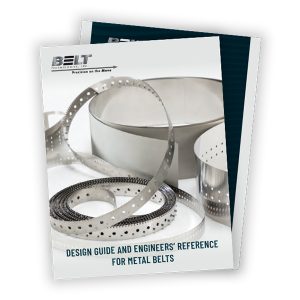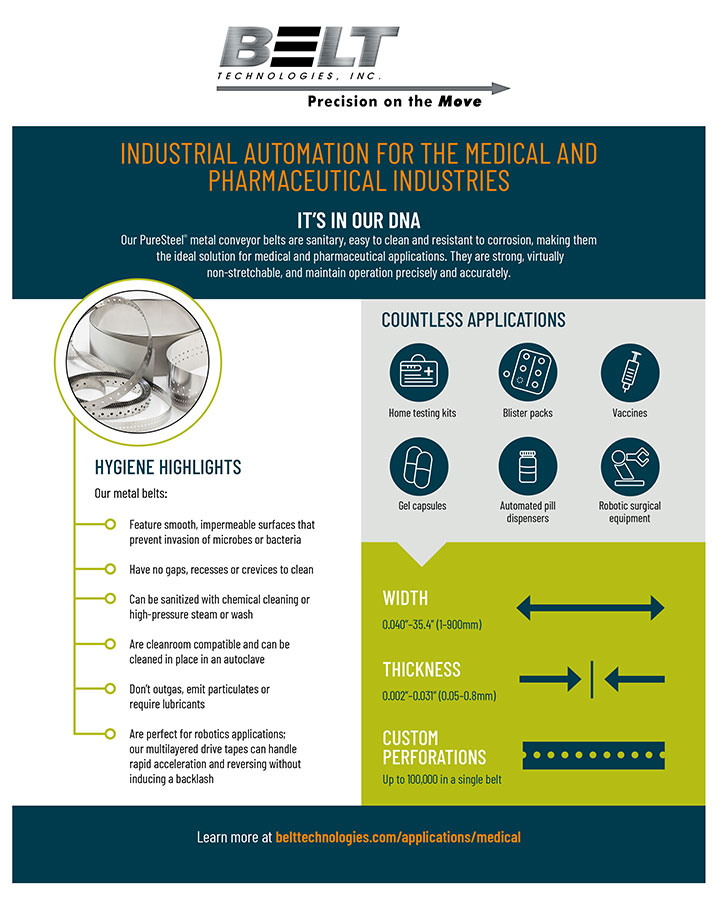Stainless steel conveyor belt systems are ideal for the cooking, freezing and handling of edible products because their versatility allows customization for any automated food processing system with exceptional results. And when we say “any,” we mean it, as a special request we received in 2021 proved.
An engineering student, Alejandra Marroquin, working on her senior design project at California State University Long Beach reached out to us with an interesting challenge. She was seeking to improve upon the time-consuming process that originated as early as 8000 BC for making tamales.
The project required her and her partners to plan, design and produce a working prototype as their final project. The team decided to develop a hand-crank tamale maker, with the goal of reducing the amount of time necessary to produce each tamale, as well as the tedious manual stretching and rolling required.
Food Grade Parts an Essential Ingredient
From the beginning of the project, the students recognized the need for food grade parts including gears, a crank and conveyor belt. Within the food and beverage industry, meeting the safe food handling recommendations of the Food and Drug Administration is essential. Approximately 48 million people become sick from contaminated food each year, with about 3,000 of those cases ending in death.
Major food recalls—like this one issued this summer in the U.S. due to Listeria-contaminated frozen fruit or the recent E. coli outbreak in Norway likely stemming from hamburger products —have become all too common. These are far from isolated incidents; there are actually more than 250 diseases that are spread through food alone, which makes hygiene a top priority with industrial automation for the food and beverage industry.
Fortunately, contamination is almost entirely avoidable with the right precautionary measures and sanitary cleanroom production elements. There are many facets to consider within the realm of hygienic food preparation—understanding the inherent microbial risks in certain foods, using the proper materials for the design and infrastructure of a facility, and following best practices for cleaning and disinfecting equipment, to name a few.
One key element to consider is the material used for conveyor belts and systems. Although they are popular, polymer, plastic and metal mesh conveyors are limited in their hygienic capabilities and may actually increase the risk of food contamination. Conversely, the unique attributes of stainless-steel belts and conveyor belt systems make food processing safer, more efficient and far more sanitary.
PureSteel® Belts Bring Inherent Hygienic Advantages to the Table
Food contamination can be broken down into two separate categories: bacterial/microbial and particulate based. Stainless steel belts are adept at prevention in both areas for numerous inherent reasons:
- Due to their flat and nonporous surface, PureSteel® belts are resistant to bacteria, making them easy to clean and compliant with even the strictest United States Department of Agriculture (USDA) requirements.
- Stainless steel is a derivative of steel with an elevated level of chromium, which creates an oxide layer on the surface to prevent further oxidation. If the metal belt’s surface is at all damaged or scratched, the newly exposed metal oxidizes almost immediately, in a self-healing capacity.
- PureSteel® belts don’t generate particulate like flat neoprene or polymeric alternatives, so they won’t create dust that could attach to food products and impact production.
- Metal belts made up of a single element don’t generate friction between component parts. By contrast, mesh belts (made up of miniscule chain links) may require lubrication, putting the flavor or quality of the foods being processed at risk.
- PureSteel® coated belts are FDA approved and ideal for use in multiple food applications including heat sealing bands for food packaging and high-temperature environments.
In researching sanitary conveyor belts through an online search, the Cal State students learned about the many advantages our PureSteel® metal belts offer for automated food processing systems. That’s when they knew they’d found the solution they were seeking.
Quick, Effective Cleaning
The advantages of PureSteel® belts go beyond their inherent hygienic nature. Regardless of how bacteria resistant they are, all belts need to be cleaned and cleared of food debris to prevent contamination—and no material is easier to clean than stainless steel because of its complete lack of gaps, recesses and crevices.
Due to their resistance to chemical corrosion, stainless steel belts can be cleaned-in-place (CIP) with almost any cleaning or sterilization method—such as high-powered steam, chemical cleaning solutions and high-pressure wash. Plastic and mesh conveyors require more intensive cleaning measures beyond CIP: either periodic removal from the production equipment to immerse in chemical solutions, which results in downtime, or the installation of complex cleaning systems and brushes.
The superior cleanability of metal belts was confirmed by Finnish food laboratory VTT Expert Services Limited. Their research found that stainless steel belts are not only easier to clean than plastic alternatives, but their advantages were compounded over time as the plastic belts became worn or damaged.
Another study found higher levels of formation of Listeria biofilm on polymeric materials than on stainless steel, with the authors noting, “plastic conveyor belts exhibited stronger bacterial adhesion compared with stainless steel.”
Serving Solutions Both Hot and Cold
One of the major aspects of automated food processing systems is the heating or cooling of products as they make their way down the conveying line—through ovens for drying, baking or cooking, and through cooled zones for solidification or freezing.
This is a difficult hurdle for most materials; most plastic conveying materials can’t withstand temperatures above 100°C, and metal mesh conveyors may become fatigued and fracture, possibly resulting in metal particles within the food. At the other end of the spectrum, freezing temperatures can cause serious wear and tear to traditional materials, which may shrink or become brittle, leading to the eventual failure of the belt. (See how we helped this food processor convey their breaded meat products through a spiral drum freezer on a solid metal belt with operating conditions below -40°F.)
PureSteel® belts and conveyor systems serve up the perfect solution. Due to their low coefficient of thermal expansion (CTE), stainless steel alloys can resist a wide range of temperature extremes in ovens or freezers without warping or breaking. In addition, single-surface, solid, stainless steel products transmit energy in the form of heat, cold and electricity; this superior thermal conductivity results in a more uniform heating and cooling process.
Our engineers can help you choose the specific grade of stainless steel most effective for your application, just as we did for the Cal State students. For instance, Invar will remain flat when operating in environments up to 400°F, compared to 300 series stainless steel, which can start to see distortion at temperatures below 400°F. For extremely elevated temperatures, our engineers typically recommend Inconel 625 and 718, which can operate in environments with temperatures up to 1,600°F.
Cooking Up Custom Solutions
When Alejandra reached out to us to discuss her project, we were so impressed with her entrepreneurial spirit and design sense, we provided a perforated endless PureSteel® belt for her project at no cost. Not only did the belt meet her team’s design specs, but it was also a durable and sanitary addition to their newly devised kitchen equipment.
Beyond the key benefits we’ve highlighted, metal belts possess many other unique properties that are advantageous for everyone in the food industry, offering superior precision, control, longevity and cost effectiveness.
Our engineers are up for every challenge, combining their exceptional experience with customization options that include:
- countless perforation patterns
- unique belt sizes as thin as 0.002 inches, as narrow as 0.040 inches and as wide as 36 inches
- a large array of metal alloys
- numerous surface coatings and textures
- custom attachments
- unlimited travel lengths
Reach out today to learn how you can leverage our capabilities to meet your industrial food and beverage automation challenges.



